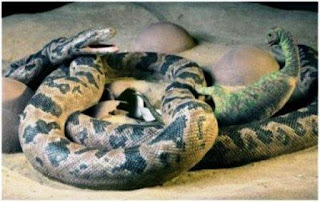DISAMPING KANAN INI.............
PLEASE USE ........ "TRANSLATE MACHINE" .. GOOGLE TRANSLATE BESIDE RIGHT THIS
.................
T-REC -TUGUMUDA REPTILES COMMUNITY-INDONESIA
More info :
www.trecsemarang2011.blogspot.com
minat gabung : ( menerima keanggotaan seluruh kota dan daerah di Indonesia )
08995557626
..................................
KSE – KOMUNITAS SATWA EKSOTIK – EXOTIC PETS COMMUNITY-- INDONESIA
Visit Our Community and Joint W/ Us....Welcome All Over The World
www.facebook.com/groups/komunitassatwaeksotik/
KSE = KOMUNITAS SATWA EKSOTIK
MENGATASI KENDALA MINAT DAN JARAK
KAMI ADA DI TIAP KOTA DI INDONESIA
DETAIL TENTANG KSE-----KLIK : www.komunitassatwaeksotik-pendaftaran.blogspot.com
GABUNG......... ( menerima keanggotaan seluruh kota dan daerah di Indonesia )
HUBUNGI : 089617123865-08995557626
.........................
' Anaconda ' memenuhi ' Jurassic Park ' : Fosil ular dari India yang diberi tukik dinosaurus
Date:
March 2, 2010
Source:
University of Michigan
Summary:
Enam puluh tujuh juta tahun yang lalu , ketika tukik dinosaurus pertama bergegas keluar dari telur mereka , itu adalah yang pertama - dan terakhir-bagi mereka - mungkin setelah adanya rahang terbuka dari ular dengan panjang 3,5 meter bernama Sanajeh indicus , berdasarkan penemuan di India dari kerangka fosil yang hampir lengkap dari ular primitif yang melingkar di dalam sarang dinosaurus .
................ Sebuah tim paleontologis internasional yang dipimpin oleh University of Michigan ,Jeff Wilson dan Survei Geologi India Dhananjay Mohabey akan mempublikasikan penemuan mereka secara online 2 Maret di jurnal PLoS biologi .
Sisa-sisa ular yang hampir lengkap ditemukan awet dalam sarang dinosaurus sauropoda dewasa yang merupakan hewan terbesar yang diketahui hidup di bumi . Ular itu melingkar di sekitar telur yang baru menetas dan berdekatan dengan tukik sauropod..............more
'Anaconda' meets 'Jurassic Park': Fossil snake from
India fed on hatchling dinosaurs
Story Source:
Journal Reference:

